Features of growing black onions
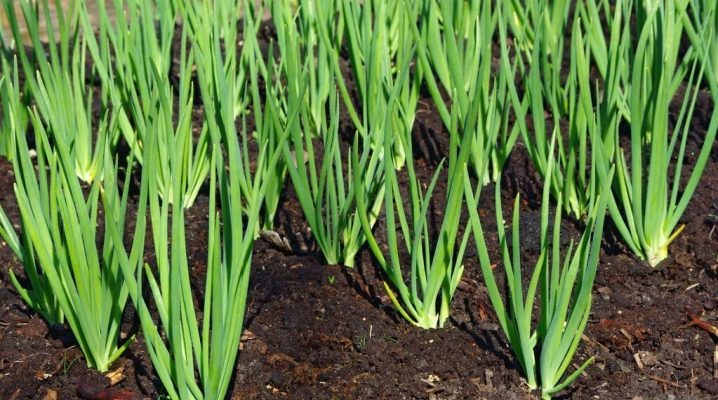
Growing regular onions from nigella seeds requires careful preparation. Sowing of material on a turnip is carried out in March and in other periods, while it is important to choose the right varieties, check the expiration dates. A detailed overview of all the important points will help to figure out where to sow black onions, when to plant them on the head.
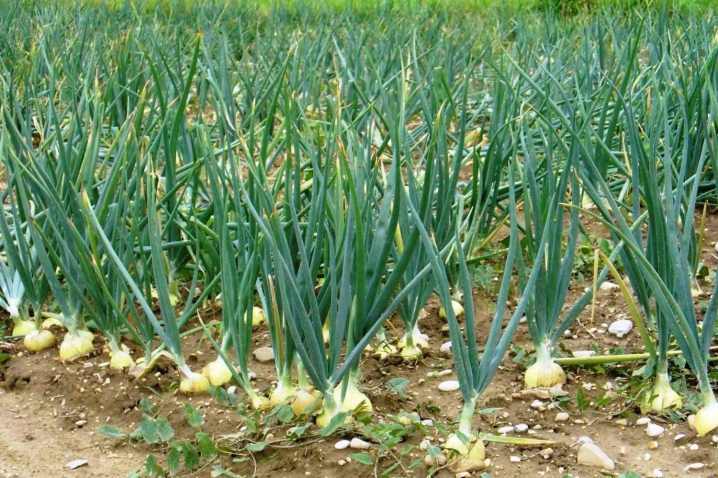
What it is?
Nigella onions are a type of planting material, and not at all a separate variety of this plant. The seeds are harvested during flowering. When fully ripe, they turn black - hence the name. The description of the seeds is quite simple. Each of them is formed into a miniature box that appears in place of the onion flower.
Get nigella after the plant gives an arrow. Usually, the inflorescences are cut off to increase the size of the turnip in the ground. But you don't need to do this to get your own planting material. It is important to wait until flowering is complete, and then leave the resulting bolls on the arrow until they are fully ripe. When collecting seeds, you need to cut off the heads carefully so as not to lose their contents.
The great advantage of this reproduction of onions is the increased resistance of plants to diseases. Also, they do not give shooters in 1 year, until they receive a set.
Planting material is inexpensive, and the variety of varieties is counted in dozens of names.
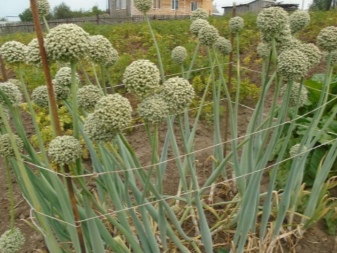
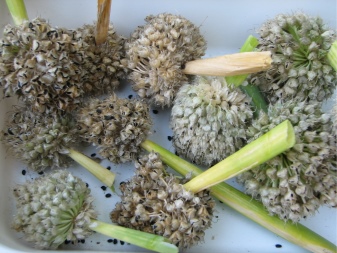
Variety selection
It is worth knowing that absolutely any onion can be grown by seed. But in Russia, nigella is traditionally used for planting a certain group of varieties. These include lettuce white onions and purple sweet, yellow and red. When choosing seed material for sale, you can pay attention to precisely those varieties that are most often used for growing by sowing.
- "Black Prince". Red onion with a bright burgundy color of the husk. The heads are not large, up to 70 g in weight, with a juicy, slightly bitter core.
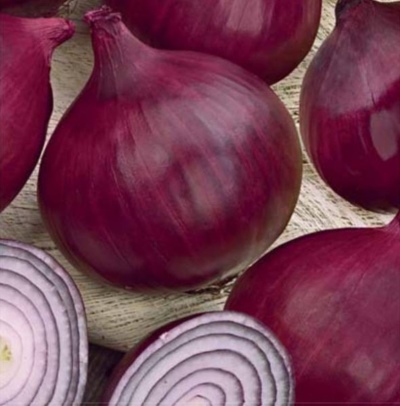
- "Crimson ball"... The dark purple heads of this bow have a regular spherical shape. The variety is fruitful, with a sweet salad flavor.
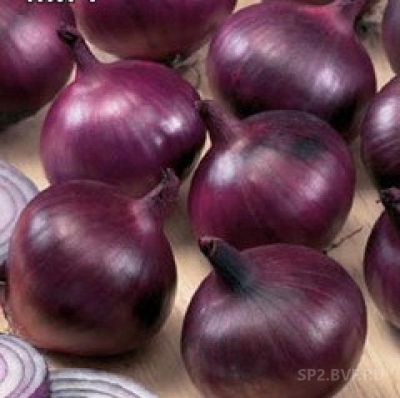
- Hybrid "Esaul". Mid-ripening semi-sharp onions with medium ripening periods. He gives bountiful harvests. The heads are medium, rounded.
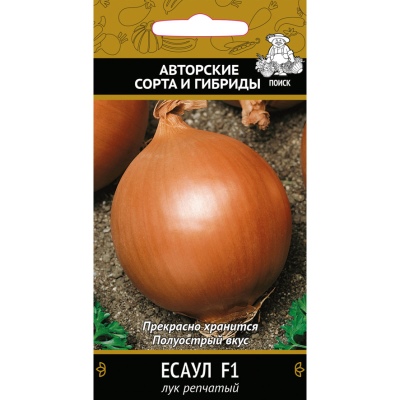
- "Neman". White variety, one of the most famous and popular. This is a mid-season onion with a medium pungency of taste. Heads weighing up to 150 g each grow from the seedlings.
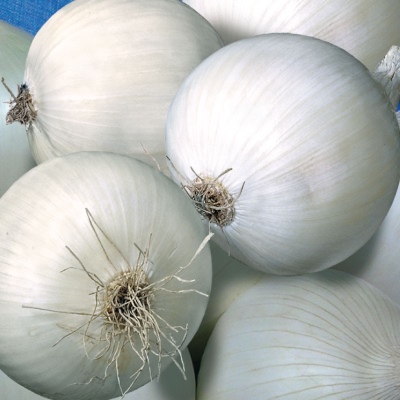
- "Myachkovsky". Early ripe medium-sized onions with yellow husks. The variety is valued for its general unpretentiousness, ease of cultivation.

- Strigunovsky. Onions of medium ripening, with heads weighing 80-100 g. The taste is slightly spicy, with a slight bitterness. The variety is suitable for long-term storage.
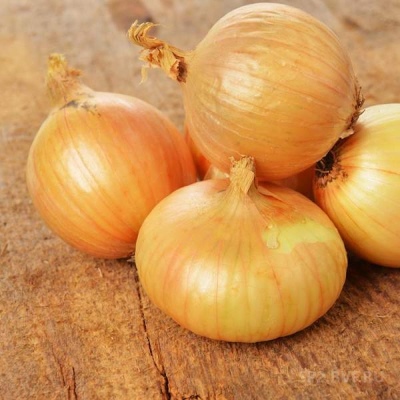
- "Centaur". A variety of yellow large onions with a short ripening period. Resistant to difficult growing conditions, unfavorable climatic conditions.

- "Exhibitive". A variety of Dutch origin with very large heads - up to 600-800 g in weight. It is very good in salads, has a sweet taste without bitterness.
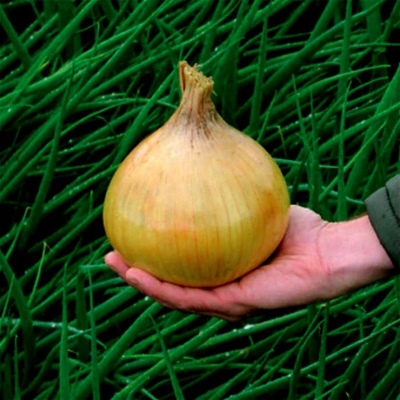
- "Sterling". An almost delicious white onion with large heads. Tasty fresh, in salads and preserved.

- "Bessonovsky". Small-fruited onion variety, characterized by unpretentiousness to growing conditions. It is versatile, producing small rounded bulbs with a characteristic spicy taste. Stored until next season.
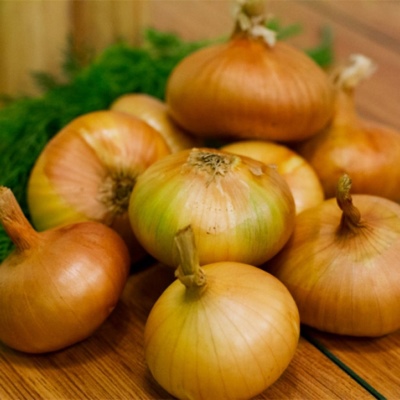
Other popular varieties that can be grown from nigella onions include "Moldavsky" and "Siberian", "Carmen" and "Stuttgarten Riesen".
When making a choice in favor of one of the varieties, it is worth paying attention to its compliance with the climatic conditions of the region. It is important that the heads have time to ripen on time.

Sowing dates
The traditional sowing time for nigella is in the spring. The exact timing depends on whether the seeds will be placed directly in the garden or grown in seedlings. In colder climates, from Siberia to the Urals, the second method is used. Sowing for seedlings is carried out in March, in the first decade of the month. Plants will be ready for transfer to open ground in mid-May.
Direct sowing is possible only after warming up the earth. Usually in Siberia and the Urals, the first decade of May is chosen for this.
In Central Russia and in the northwestern part of the country, direct planting begins at the end of April. With the seedling method, the timing will be different. Seeds are sown in containers at the end of February. At the beginning of May, young onions will be ready for transfer to the ground.
In the south, sowing is carried out only in a direct way. The choice of timing depends on the characteristics of the climatic zone. You can navigate by the end of March - beginning of April.
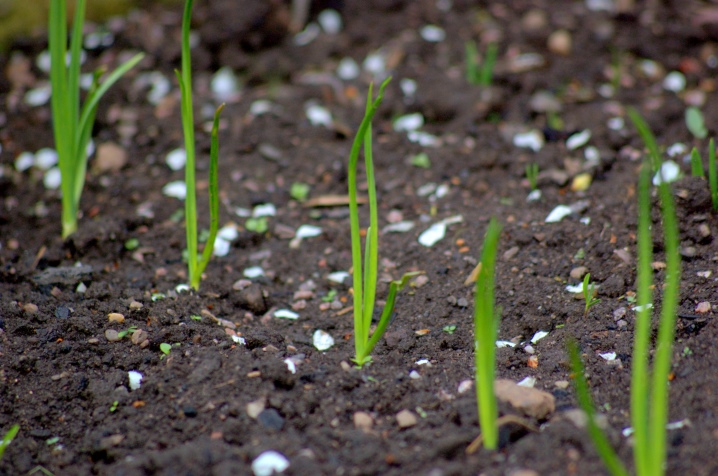
Preparation
In order for the seeds to be well protected from diseases, they need preliminary preparation... The soil in which the onions will be planted should also be properly processed. This will help avoid most of the risks. For each stage, the rules of preparation will be different.
Planting material
When buying seeds, be sure to pay attention to the expiration date. For black onions, it is 2-3 years. Self-collected seeds are stored as long as purchased seeds.
It will also be useful to test them for germination by placing them in water. Empty shells will pop up.
The next step will be the treatment of infectious diseases, fungal spores... For this, soaking in disinfecting liquids is used. For greater convenience, seeds are pre-placed in a tissue bag. Then for 20-30 minutes immersed in a solution of manganese at a concentration of 0.1%. After processing, the seeds are washed with running water.
When growing black onions, summer residents often want to quickly germinate planting material. This is quite possible if the seeds are treated in a special solution. The easiest way is to soak them in the Epin solution, preparing it from 1 drop of the product and 200 ml of liquid. They impregnate clean gauze with it, put onion seeds on it, leave it until roots form, periodically adding a solution. Germination can be accelerated with the seedling method and with direct sowing.
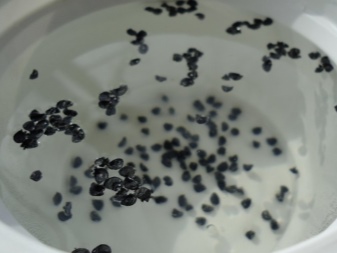
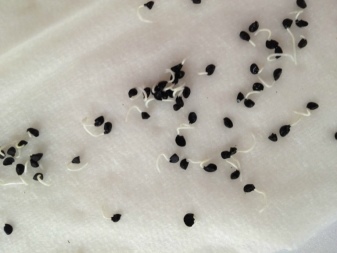
Priming
Soil preparation in the garden consists of a number of basic agrotechnical measures.
- Digging... It will allow you to select weeds, loosen the earth, saturate it with oxygen.
- Fertilizer... If manure has already been introduced into the soil in the fall, you will not have to add it additionally. Poor soil or turf is saturated with compost, humus, complex fertilizers, taking into account the type of crop.
- Leveling... It will make sowing easier, help you easily mark the rows.
When sowing seedlings, special mixtures for bulbous crops are poured into containers. Garden soil is pre-disinfected in an oven or watered with a manganese solution.
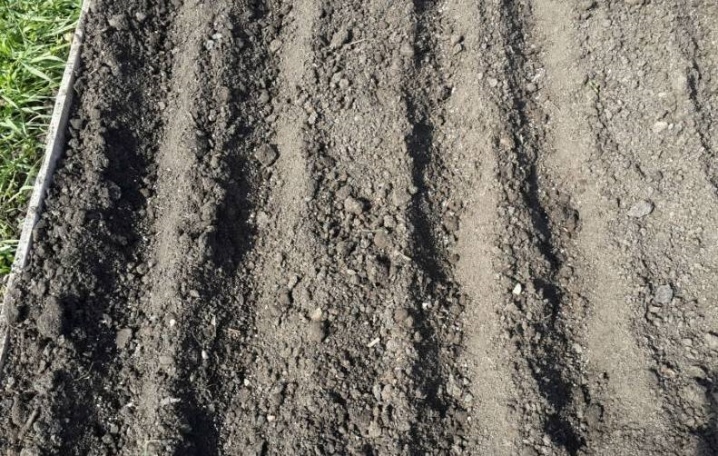
Landing technology
It is necessary to plant nigella correctly so that the recommended terms are not violated. Otherwise, it will not work to grow a large sevok. In regions with warm climates, even planting on a layer of snow is possible. This will provide a more even distribution of seeds, give them additional conditions for hardening.
When grown on an industrial scale, the seeding rate per hectare is 1,000,000-1250,000 units. The distance when growing per head (per turnip) and per greenery will be different. The seeder facilitates this process, speeds up and automates it.
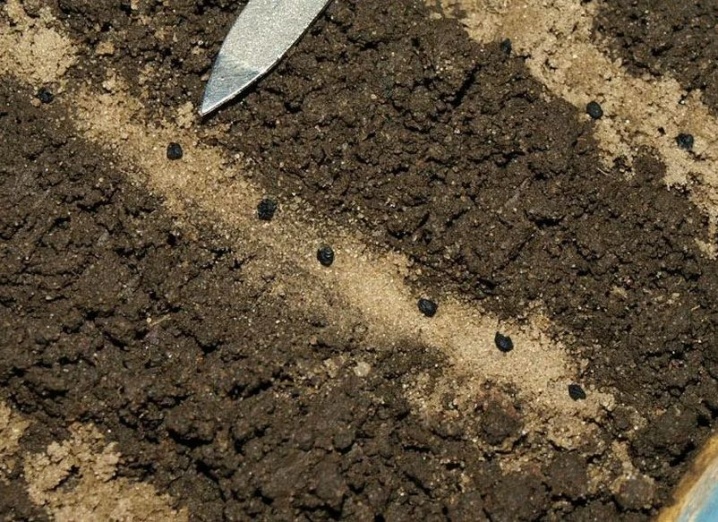
For seedlings
If you want to be guaranteed to get a full-fledged crop from nigella within one season, cultivation is carried out in seedlings.You can sow seeds in containers from the end of February to the end of March. Seeds are pre-germinated to get seedlings faster.
The step-by-step process looks like this.
- Moistening the soil.
- Seed placement... Dry can be used, but it will take more time to get sprouts.
- Sprinkle with a layer of humus. It is slightly compacted.
- Covering crops with foil... It is periodically removed, the soil is sprayed with warm settled water.
- Emergence of seedlings... When the first green shoots appear, the container is transferred to a well-lit window. It is advisable to maintain the temperature in the range of + 15-16 degrees Celsius.
By mid-spring, onion seedlings in containers are placed outdoors or in a greenhouse. The optimum temperature for her is 6-7 degrees. Young onions are transferred to the ground in the 1st decade of May. At this point, the bow should have thin feathers about 15 cm high.

Planting nigella in the "snail" is quite popular... You need to sow seeds in a specially created roll. In it, the seedlings are healthier, stronger. A stand is formed under the "snail" - a bowl or container with transparent walls, slightly larger in diameter than the bundle, is suitable. It itself is made from a laminate backing sold in hardware stores.
Sowing step by step looks like this.
- The table is covered with oilcloth.
- The underlay for the laminate is cut into strips as wide as a roll of toilet paper and 150 mm in length.
- On one such tape, a layer of moist earth about 1 cm thick is poured, with an indent of 10 mm from the upper edge.
- Seeds are laid out. From the top of the substrate, it is worth retreating 20 mm.
- Upon completion of sowing, the roll is wrapped in a "snail", fastened with clerical rubber bands.
- The roll is placed vertically in the container. Water is poured into the bottom of the container. The seed part should be facing up.
- Crops are sprayed from a spray bottle. Then a bag is put on the upper edge, fixed with an elastic band.
The mini greenhouse is ready. It remains only to ventilate and spray the soil until shoots appear, removing the bag, and then, with the first green shoots, provide the plants with normal daylight hours.

In open ground
Embedding seeds in the soil has certain limitations. On light soils, they are buried 30 mm. On heavy and dense sowing, it is carried out with a 15-20 mm filling of the nigella. Upon completion of planting, the soil is rolled with a special tool. This will seal the surface.
The landing pattern also has its own characteristics. 18-20 cm are left between the rows. At first, the nigella is sown quite densely. As shoots appear, thinning is carried out, based on the following norms:
- leave a distance of 50-60 mm between the plants on the set;
- for a turnip - 80-100 mm.
Sowing in autumn allows for a more mature annual onion. In this case, the planting process is no different. But in winter, the soil surface is carefully covered with a thick layer of snow. In the spring, the surface before shoots is mulched with humus or peat, laying them with a layer of 20 mm.
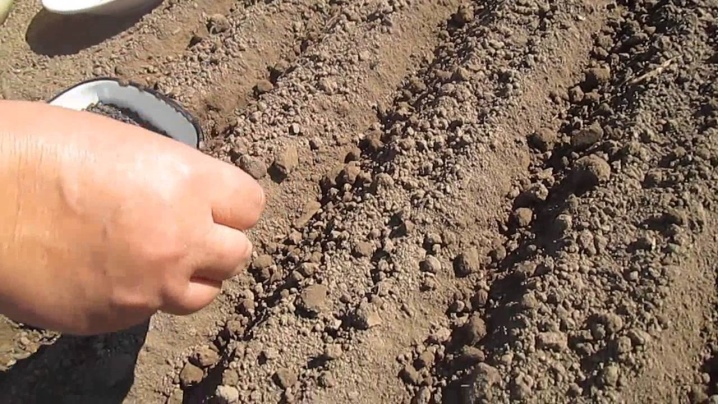
Care
When sprouting onions from seeds at home and in the garden, do not forget about caring for them. Crops will require picking and watering, several times will have to feed the seedlings. The basic set of such measures will be as follows.
- Thinning... It is performed when the bow has released 1-2 feathers. It will take several steps. Feathers plucked during a dive can be used in cooking. Excess seedlings are removed, leaving 80-100 mm between adjacent plants.
- Loosening and watering. It is important to keep the soil moist until the emergence of shoots. In the future, watering is regulated as the land dries up, it is carried out using warm settled water. After each such procedure or natural precipitation, the soil is loosened. Stop watering about 21 days before the planned harvest.
- Top dressing... It is not required if the bed was well fertilized during preparation. In other cases, after thinning, you need to add a mullein solution in a 1: 5 ratio.
To reduce the amount of weeds, the beds can be mulched with straw or other materials.
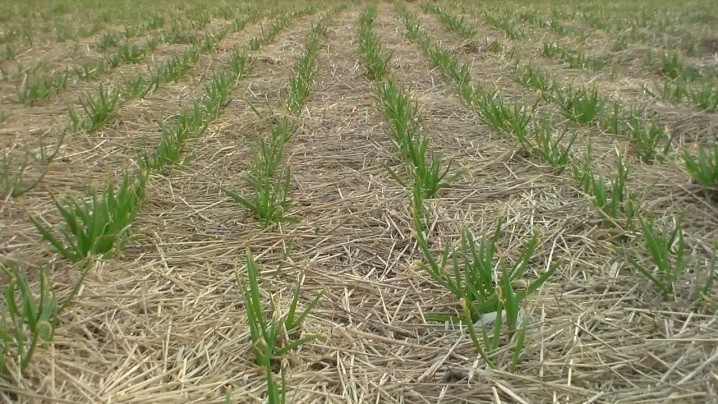
Diseases and pests
Garden pests such as onion fly and stem nematode can pose a potential hazard to onions grown from seed.... The first has a detrimental effect on the surface parts of the plant, the second eats its head. The easiest way to protect crops is by using safe natural measures. To do this, marigolds or calendula are placed around the perimeter of the onion beds, the smell of which scares away insects.
You can also periodically sprinkle the beds with wood ash and tobacco leaves ground into dust. Prevents the onion fly from infecting the beds and laying the covering material on the soil surface.
Of the diseases, the most dangerous for nigella are root rot arising from infection of plants with a fungus... In this case, it is worth starting treatment with Fitosporin, a safe fungicide. In a wet summer, spraying for preventive purposes is performed at intervals of 14 days.
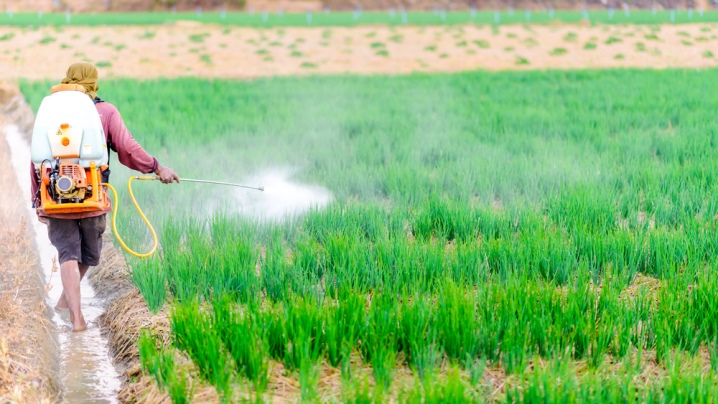
Possible growing problems
The approximate timing of the emergence of seedlings of black onions is 2 weeks. If this process is delayed, the reason may be a violation of the landing rules. Sometimes onions do not germinate for a long time because the seed is of poor quality. Therefore, it is so important to carefully check it for germination. Sowing blindly can be detrimental to the final yield.
Figuring out what to do if the bow falls off is also important. Feathers that are usually laid down indicate that it is time to harvest. It is worth waiting until this position takes 3/4 of the landings.
Other possible problems include yellowing of feathers. It may be related to:
- bacterial contamination;
- lack of nitrogen in the soil;
- drying out of the soil.
Only by establishing the exact cause can adequate treatment be prescribed. This can be an increase in the rate of watering, top dressing. Bacterial infections should be treated with special medications.
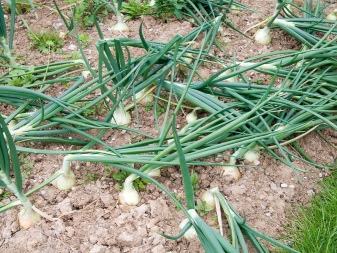
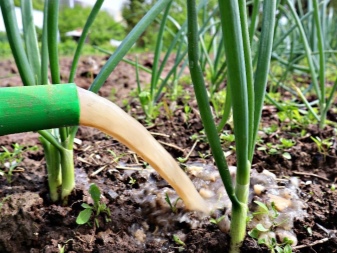
Getting a full-fledged head from a 1 year old bow is a desirable goal for many summer residents. But only large-fruited varieties give such results. Having made a mistake with the choice of material, you can only wait for the sevka. The same goes for planting density. In this case, the onion simply cannot grow large enough.













The comment was sent successfully.